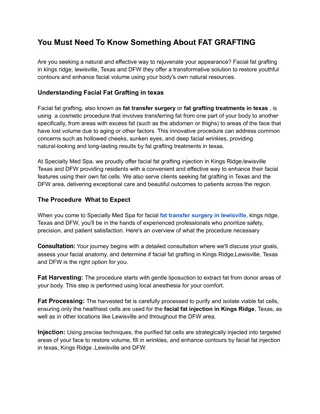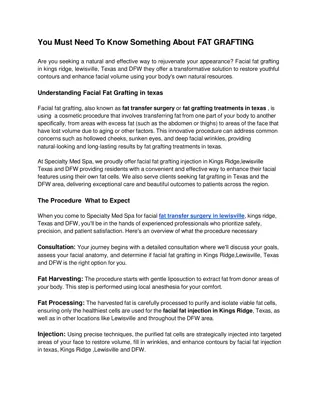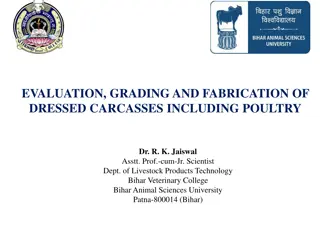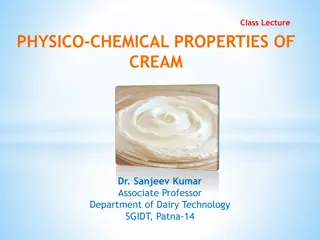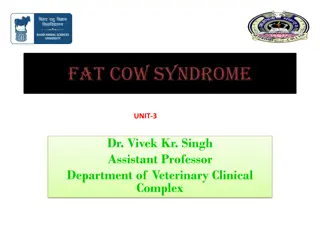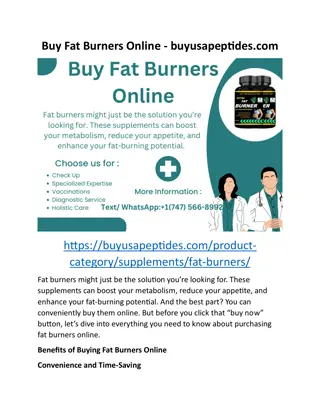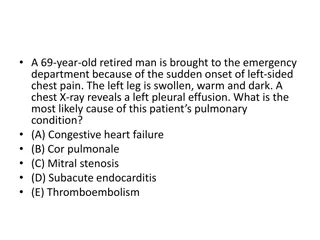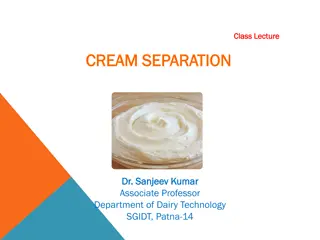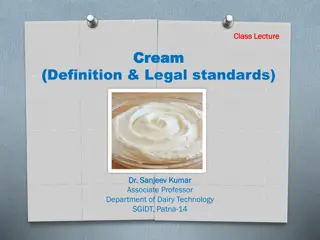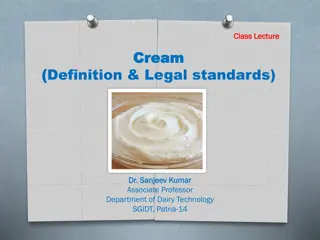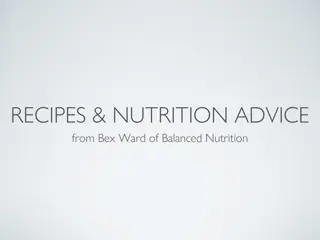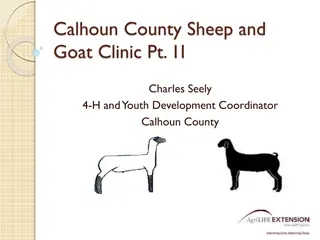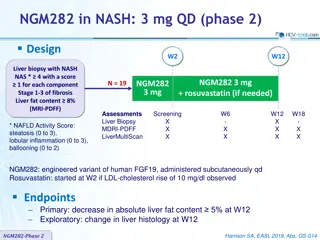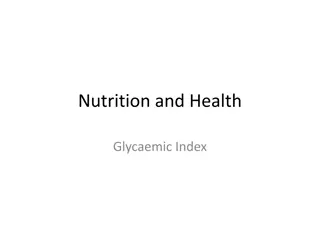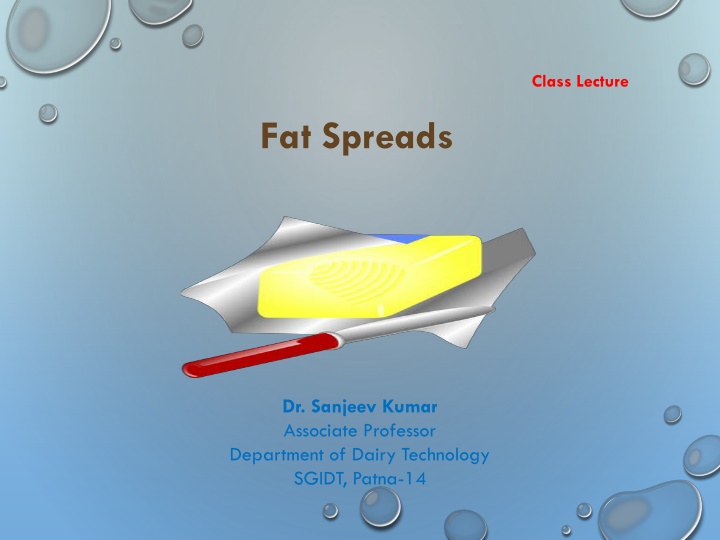
Fat Spreads, Butter, and Makhan Manufacturing Process
Explore the world of fat spreads, including dairy and non-dairy spreads, along with the differences between butter and margarine. Learn about the traditional process of making Makhan from yogurt, as well as the various uses of butter in cooking and baking industries.
Uploaded on | 1 Views
Download Presentation

Please find below an Image/Link to download the presentation.
The content on the website is provided AS IS for your information and personal use only. It may not be sold, licensed, or shared on other websites without obtaining consent from the author. If you encounter any issues during the download, it is possible that the publisher has removed the file from their server.
You are allowed to download the files provided on this website for personal or commercial use, subject to the condition that they are used lawfully. All files are the property of their respective owners.
The content on the website is provided AS IS for your information and personal use only. It may not be sold, licensed, or shared on other websites without obtaining consent from the author.
E N D
Presentation Transcript
Class Lecture Fat Spreads Dr. Sanjeev Kumar Associate Professor Department of Dairy Technology SGIDT, Patna-14
FAT SPREADS DAIRY SPREADS:- FAT SOURCE IS MILK FAT NON-DAIRY SPREADS:- VEGETABLE FAT WITH OR WITHOUT MILK FAT AS SOURCE OF FAT 1. LOW FAT SPREADS: FAT PERCENT ( 40 TO 60% ) 2. REDUCED FAT SPREAD: FAT PERCENT (60 70%) USES 1. DIRECT CONSUMPTION ALONG WITH SANDWICHES, SALADS ETC., 2. CONFECTIONERY INDUSTRY 3. BAKERY INDUSTRY
MANUFACTURE OF FAT SPREADS Preparation of the water phase and fat phase Emulsion preparation Pasteurisation Crystallization Filling
DIFFERENCE- BUTTER & MARGARINE BUTTER MARGARINE Made from animal fat Made from vegetable oils More saturated fats (51%) More (8%)& poly-unsaturated fats(37%) mono-unsaturated fats No trans-fat Contains trans-fat Types: Cultured, sweet, raw, whipped cream Types:- blended, hard low fat, low spread
MAKHAN BUTTER WITH NATURAL CULTURE FLAVOR FROM YOGURT RAW WHOLE MILK HEATED TO 90 C AND COOLED DOWN TO 45 C CULTURE ADDED , MILK INCUBATED IN TERRACOTTA POT HANDI OR MATKA AT 45 C OVERNIGHT MILK TURNS INTO DAHI (YOGURT) PROCESS TO MAKE MAKHAN IS CALLED 'MANTHAN MANTHANI TIED BY ROPE TO FIXED POST
WOODEN CHURNER STICK 'PHIRNI' INSERTED IN DAHI PHIRNI ROTATED BACK AND FORTH BY PULLING ON A ROPE WRAPPED AROUND THE PHIRNI. MANTHAN TAKES PLACE DURING EARLY COOL MORNING HOURS. IN ABOUT 10 TO 20 MINUTES OF CONTINUOUS CHURNING, BUTTER-FAT 'BREAKS' FROM YOGURT AS BUTTER-GLOBULES. BUTTER-GLOBULES CLUMP TOGETHER TO MAKE LUMPS OF MAKHAN THAT FLOAT ON TOP MAKHAN CHAACH SKIMMED OFF LEAVING BEHIND HEAVIER (MORE FAT) THE MILK, LOWER SHOULD BE THE TEMPERATURE OF DAHI TO MAKE MAKHAN
Uses of butter 1. 2. In the preparation of sauces 3. As a cooking medium 4. In the baking and confectionary industries 5. In ice-cream , manufacturing 6. In production of reconstituted milk Direct consumption butter oil and ghee

